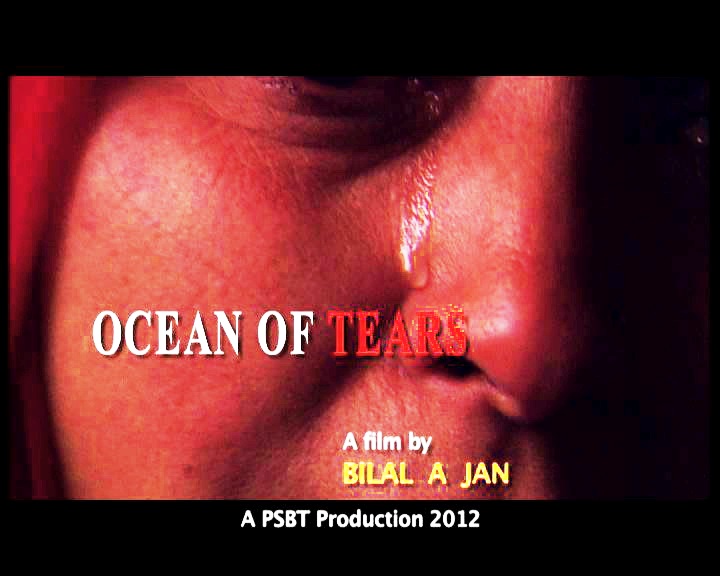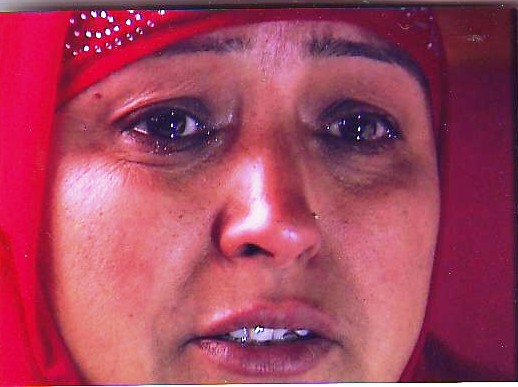For the first time in the history of turbulent Kashmir, we get to see, hear and be shocked by the situation of fear and danger that women in the valley must constantly live in. Ocean of Tears, a documentary directed by Bilal A. Jan and produced by Public Service Broadcasting Trust, Delhi, gives us a bizarre insight into the administrative, legal and judicial apathy these women are victim to. The gang-rapes and the killings, murders and forced disappearances are one side of the story.
The other side is darker, more scary and inhuman – the Indian Government’s attempts to either hide or white-wash the truth of these violent acts instead of punishing the offenders who belong to the military forces – the Army, the Rashtriya Rifles, or the CRPF. Militants too might have been involved but most of these atrocities on women are said to have been inflicted mainly by the different military outfits of the Indian defence services. The first frame of the film is a quote from the famous poet Jalal Uddin Rumi. It says –
Woman is a ray of God
Not a mere mistress.
The Creator’s Self, as it were,
Not a mere Creature.
But the stories the film depicts show otherwise. It goes back to the gang-rape of 32 women in the village of Kunan Poshpora in Kupwara District, J & K that took place on 23 and 24 February in 1991. According to the villagers’ statements and newspaper reports, over 32 women and children were gang-raped. It had snowed that day and the paths were covered with four feet of snow. At 11.00 pm, the crack-down began. The men were dragged out of their homes and forced to remain on the snow-covered paths outside. Youngsters were taken to the torture camps and the women and girls were raped and beaten so much that most of the men could hardly recognize their own wives the next morning. The rapists, soldiers all, were from Panzgham camp.

Ocean of Tears Poster. Pic: Bilal Jan
Ocean of Tears was originally scheduled to premiere on 15 December, 2012 in Kashmir University. “But the State authorities exerted pressure and the screening was blocked by the University authorities because they said it might trigger law and order problems. I told them that the film already has the Censor Certificate but they just would not listen and screening was denied,” says Bilal Jan.
“Kashmir has no cinema halls at present and all the theatres are occupied by the Indian security forces. There is no cinema culture, no state film board and no funding. Yet, I went on with my mission and completed the film,” he adds. Redemption arrived in the film having been selected for screening at the 3rd Nepal Human Rights International Film Festival in February.
The camera captures a group of angry husbands twenty years later, seated in a semi-circle narrating their tales of despair and anger. Four of the victims died because of excessive bleeding. Some of them are still getting treatment. Zareefa died of excessive bleeding leaving behind six unmarried daughters. Zoona, Rafiqa and Sara had to get their uterus removed. Sara says she has to spend Rs.8000 to Rs.10,000 on medicines. Though the men approached the Brigadier of the nearby camp, the Superintendent of Police and the Corps Commander of Army who came to take the statements of the victims and the men, nothing happened. A FIR was finally registered after Wajahat Habibullah, the then Divisional Commissioner of Kashmir intervened and a case of gang rape was registered against the Rashtriya Rifles of 68th Brigade who had entered the village and committed the heinous act. But the government of India refuted the claims of the complainants because the FIR was lodged three days after the attack. How could the victims file a FIR when they were held captive by the soldiers and the women were not even able to walk and talk?
Many children of the village were refused admission to schools in neighbouring villages because their mothers had been raped. Some children do not want to go to school because they are ridiculed by the children of other villages. Many girls who were raped have remained unmarried. The case was re-opened 20 years later because the people of the village demanded a reinvestigation on the basis of a SHRC Report.

A still from the documentary. Pic: Bilal Jan
This is not the only story the film focusses on. It talks about the attack on and subsequent deaths of two young ladies, Neelofar, 24, and Asia, 18, of Shopian who were molested, raped and killed and their bodies were dumped in a stream nearby by two members of Rashtriya Rifles. This was the first case that attracted media attention and led to the society’s rebellion against such atrocities for the first time.
There were three investigations into these deaths - the Jan Commissions’ investigation, the SIT’s investigation and the CBI that was brought in before the SIT could even submit its report. Faiyaz Ahmed Chapoo, spokesperson of Majlis, an NGO in Shopian, says that the CBI was called in to distort the truth and give the perpetrators a clean chit. The CBI report concluded that the young women had died of drowning in that slender trickle of a stream. S.M. Sahai, Inspector General of Police, J & K, sticks to this report adding that the younger girl was not touched, much less raped. Chapoo says that the samples given for testing were not the correct ones and the report was based on these planted results.
The third case is the gruesome and cold-blooded killing of two sisters, Akhtara and Asifa by militant gunmen which is cowardly and inhuman. One of the attackers, Wasam Ganai was killed in an encounter while Muzaffar Naik has not yet been captured. Nusrat Andrabi, Social Worker and Civil Rights Activist says that no action has been taken on 2500 rape cases by the security forces which is the highest in the country.
The fourth case is of the rape of a young woman Ashmal who was raped by some men of the Rashtriya Rifles on 20 April 2002 when she had gone to collect grass, and her 13-year-old daughter Kulsum saw all this from behind a tree. Ashmal died of cardiac arrest on the way to hospital and her daughter’s eye-witness account did not stand in court because she was a child at the time. The family did not lodge any FIR because it was terrified and is still reeling under the shock of this horrific incident.
Mymoona Banu’s husband Akhtar Hussan has been missing for 14 years and she is left alone to take care of the family. He disappeared after he left to attend a friend’s funeral. She is a microcosm of all the half-widows that the state has created, leading to the founding of the Association of Disappeared Persons (APDP) formed in 1994 by families of victims of enforced and involuntary disappearances of family members. The Association records that between 8000 and 10000 people have gone missing during different regimes since 1989 and it is carrying an on-going campaign against their disappearing family members.
Ocean of Tears has a voice-over in clipped English at different points that sounds jarring in a film exploring atrocities in a specifically disturbed and ethnic area, where the locals do not know English at all. The talking heads – Tariq Ahmed, Secretary of the Human Rights Commission, J & K, Prof. Bashir Ahmed, Head of the Department of Sociology, University of Kashmir and Nusrat Andrabi – are good but the film with its on-the-spot, direct comments by the victims stands on its own and is enough to hold the narrative together. The only jarring spot seems to come from the comments in heavy American accent by Dr. Nyla Khan, Professor of Oklahoma University who makes some flying ‘outsider’ comments on the sexual and psychological oppression of women for the sake of the camera, because she does not sound emotionally involved at all. It spoils the mood coming as it does at the beginning of the film.
This is a unique film by virtue of its subject matter that needed a lot of courage, research and painful tracking of the victims and their families over a period of time to accomplish. During the 1960s and 1970s, the picturesque valley and landscape of Jammu and Kashmir provided the backdrop for Bollywood blockbusters like Kashmir Ki Kali. When disturbances â political, military and militant â escalated and tourism was reduced to a here-now-gone-tomorrow situation, mainstream Bollywood turned to reflecting the fears that have evolved over the years, as in Mission Kashmir. But it is the documentaries that are scary, frightening and which make us question the flux in the human condition because they reflect reality in the Valley. Ocean of Tears is just one example.
























